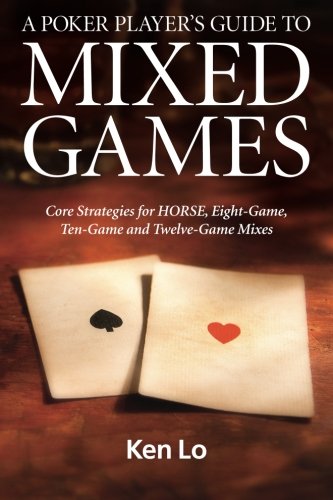Deuce to Seven No Limit Single Draw Rules and Basic Strategy
Rules of the Game
No Limit Deuce-to-Seven Single Draw is a lowball game where the best hand is 23457. Straights and flushes count against you and the aces are considered high. As the name of the game suggests there is only one draw and thus only two rounds of betting but to overcome this and stimulate more action it is typically played with a somewhat large ante. In addition, in many live tournament formats it is stipulated that one must open the pot with a raise.
Basic Strategy / Starting Hand Standards
Basic strategy and starting hand standards depend so heavily on the ante structure and table conditions that it is difficult to develop an exact set of guidelines but the following below is a reasonable set of default opening standards:
Early Position:
- Ten high or better made hands
- One card draws to a nine or better
- Presence of a straight draw is fine if your hand is something like 7643, but the holding of 5678 and similar should be folded
Middle Position:
- Jack high or better made hands
- One card draws to a ten or better
Late Position:
- Queen high or better made hands
- One card draws to a jack or better
- Two card draws to a seven (e.g. 237)
If someone has already entered the pot you need to tighten up your standards. In position you should tend to re-raise with any pat hand that you choose to play. Your opponent is often drawing and this keeps your pat range uncapped and thus you can often decide whether or not to wager after the draw.
At times you should also re-raise with some of your one card draws. This may be counter-intuitive but with somewhat shallow or medium stack depths it is probably better to three-bet a hand like 9864 as opposed to a more premium hand such as 7532. If your opponent has a weak hand they were planning to raise/fold your holding obviously doesn’t matter. But if they woke up with a monster (like an 8 or a good nine) you “don’t care” getting raised off the 9864 but would be in a terrible spot with the 7532.
How you proceed after the draw is extremely player dependent and for the most part you should look to exploit any obvious mistakes that your opponent may be making. Against tougher opponents you need to make sure you are well balanced so that they can’t make money exploiting any obvious tendencies on your part.
Regarding of your opponents in situations where you and your opponent both drew one you should tend to bet the very best and worst hands. With the very best hands you are hoping to get raised and typically have a better chance of stacking your opponent if you bet out large (at least 2/3 pot) and get raised as opposed to going for a check raise. When you make a high pair like sevens or eights it is almost always correct to bluff a large amount; even calling stations have a tough time calling big bets with ace high or worse.
Further Learning
A Poker Player’s Guide to Mixed Games by Ken Lo (Rating 7/10) – This book is worthwhile for any mixed games player and there is a chapter on NL Single Draw within the book. It is a very good introduction to the game but it reads too much like a textbook and is also very repetitive.
Next: Using Pat Hand Distributions to Make Decisions in 2-7 No Limit Single Draw->

